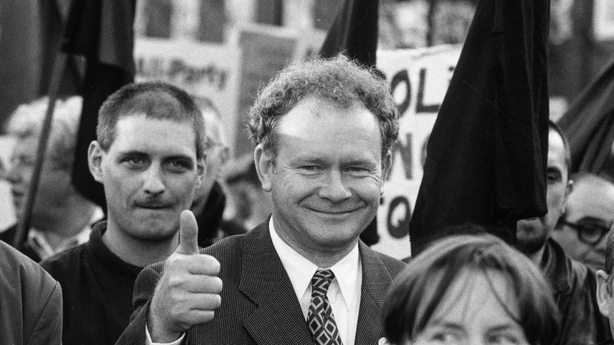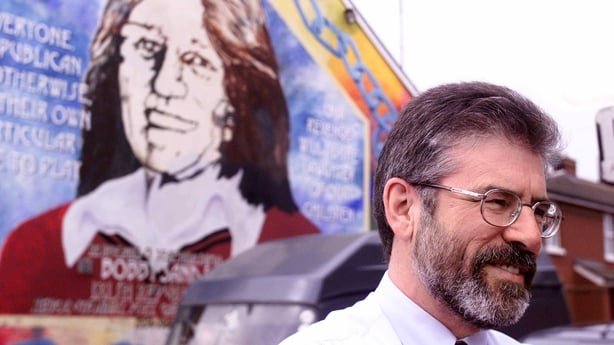Decommissioning - the destruction, surrender, or "putting beyond use" of paramilitary weapons - was the roadblock preventing full implementation of the Good Friday Agreement.
Ulster unionists refused to share government with Sinn Féin while that party was linked to a fully armed IRA; Sinn Féin pointed out that it had no weapons of its own, and could only try to persuade the IRA, which would be less likely to decommission if the executive wasn't up and running.
Catch-22.
A fascinating insight into IRA thinking was provided to the Irish government in August 1999 by Father Alec Reid, who had met members of the IRA Army Council the previous month.
Reid, a Redemptorist priest at Clonard Monastery in Belfast, played a critical role in the peace process, acting as an intermediary between the IRA and the British and Irish governments.
His report, released this week by the National Archives, paints a bleak picture, with the IRA leadership warning that demands for decommissioning were undermining the leadership of Gerry Adams and Martin McGuinness, and could lead to them and the IRA leadership being replaced.

The July meeting took place during a period of intense pressure on northern secretary Mo Mowlam to exclude IRA prisoners from the early release programme, after the murder of Charles Bennett and the discovery of an arms smuggling network between Florida and Ireland, using the US Mail service.
Exclusion of IRA prisoners from the programme would not only have meant those still in prison would be kept behind bars, but could also lead to those already freed being returned to jail – resulting in the effective collapse of the peace process.
The IRA’s main points, conveyed to the government via Father Reid, were:
The Army Council was still committed to the peace process and the Good Friday Agreement.
The British government was in danger of "losing the peace process".
The credibility of the Sinn Féin leadership in the eyes of the IRA rank and file was being undermined because they were being pushed to achieve things they could not deliver.
The last point related particularly to decommissioning, which could only take place after an IRA Army Convention voted by a two-thirds majority to change its constitution.

There had been alarm in the IRA after Tony Blair said in July that decommissioning would take place in weeks. The Army Council faced "extreme problems" in calming "people on the ground", who suspected that Adams and McGuinness had agreed to this. As a result, the Army Council representatives described the leadership’s grip and control as tenuous.
They claimed that if an Army Convention were called, it would almost certainly lead to a new military leadership, followed by a new political leadership, which would in turn mean it would be a long time before a new political process got under way.
The significance of the IRA ceasefire needed to be recognised, they said, considering it was an organisation with access to "a huge amount of ordnance" which it had chosen not to use. (This, of course, was precisely why unionists were so insistent on decommissioning – a body which chooses not to use its weapons can just as easily choose to use them.)
The Army Council said the British government needed to reinforce the standing of the republican leadership by implementing parts of the Good Friday Agreement that did not need Unionist agreement, like "equality" and funding for Irish language schools.
The representatives claimed that the security forces were taking advantage of the ceasefire to continue recruiting informers and planting listening devices. They could not understand why the British would not demilitarise, considering that they could, if necessary, remilitarise within 24 hours.
Intriguingly, while telling Father Reid that decommissioning of weapons was a remote prospect at that moment, the Army Council representatives did say they had authority to 'dump’ arms.
The significance of this remark stems from the meaning of the term ‘dump arms’ in the language of the IRA. In May 1923, then IRA Chief of Staff Frank Aiken issued an order to IRA units to cease operations, thereby ending the Civil War. His order included the instruction to ‘dump arms’.
This did not mean throwing them away; it meant that the weapons would be stored securely by those carrying them but not given up. They could be retrieved if and when the IRA leadership deemed it possible and necessary.
By David McCullagh and Shane McElhatton
[Based on documents in 2022/45/133)

